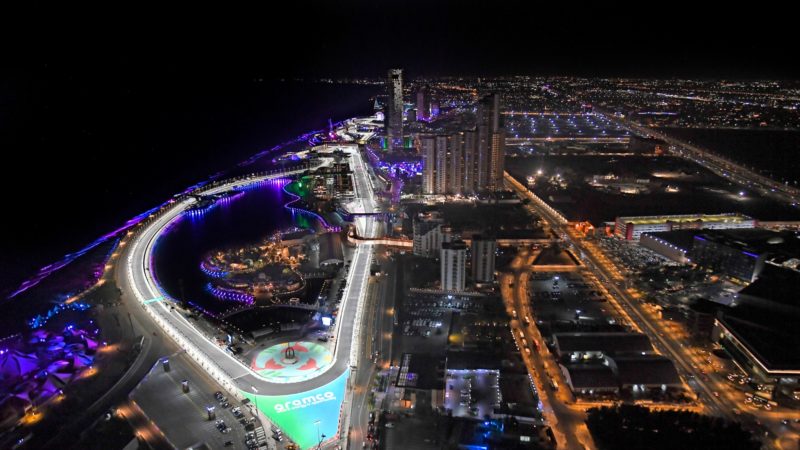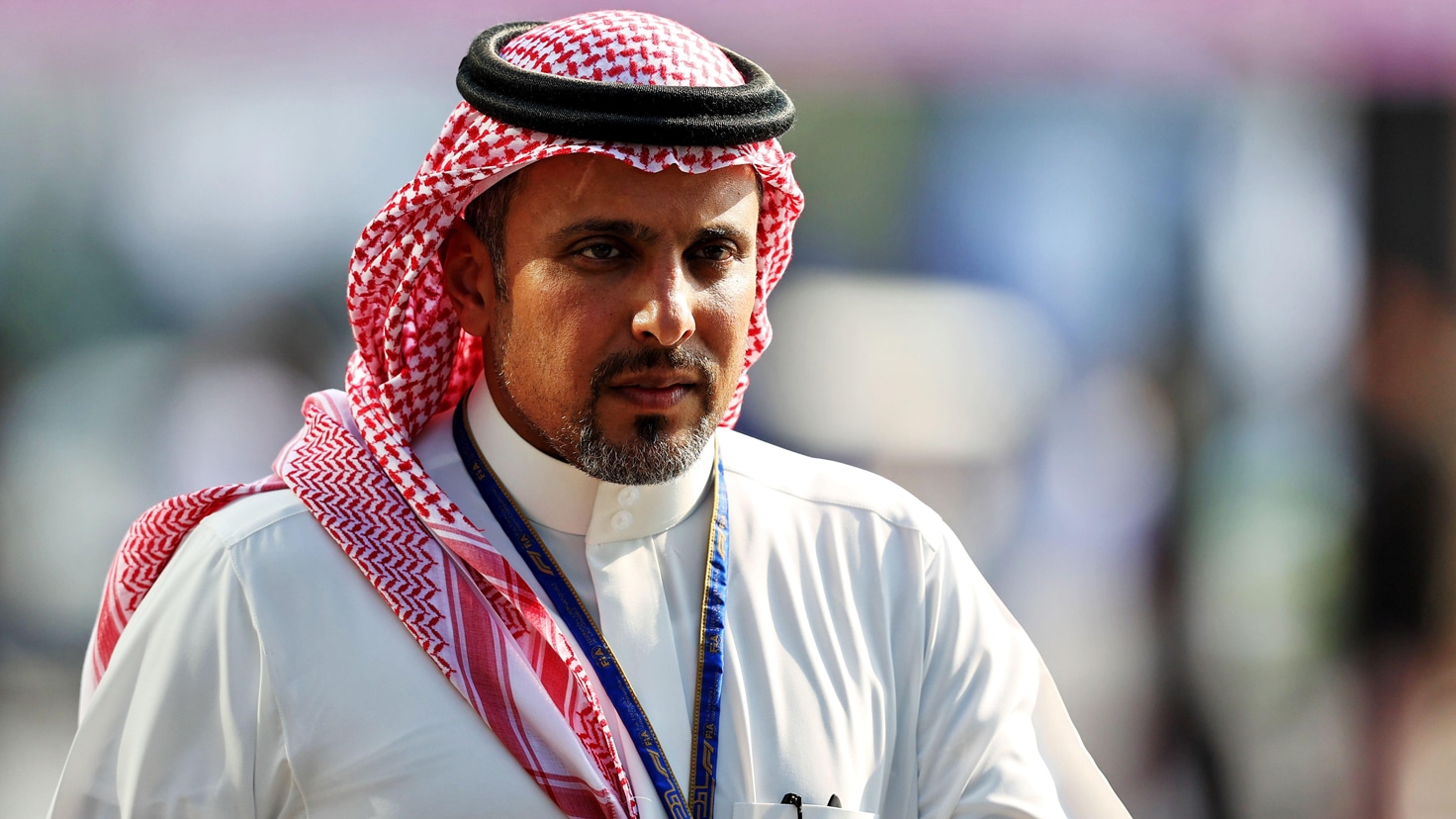Martin Whitaker: the man driving Saudi Arabia's ambitious motor sport plans
Saudi Arabia has dreams of producing an F1 world champion and a blueprint for its new grand prix circuit within a theme park. We hear how F1 in Jeddah kick-started the trend

Saudi says it wants to do more than just host events
Grand Prix Photo
Martin Whitaker is F1’s Lawrence of Arabia. A man with roots deep in UK motor racing who has relocated to the Middle East and become a driving force in expanding the sport in the region. He is now arguably the most powerful man in Saudi motorsport as CEO of the Saudi Motorsport Company and responsible for not only bringing F1 to the country but also for attracting other motor racing events to the region.
His biggest challenge was creating the Jeddah circuit, a national venue fit to host the biggest races, in the first place. “It’s extraordinary to think less than a year before the first grand prix we didn’t have a circuit,” says Whitaker, who started out as a junior staffer on Motor Sport’s former sister paper Motoring News. He’s since logged experience of Formula 1 and the World Rally Championship with Ford and managed Bahrain’s Sakhir F1 track between 2004 and 2010. His amazement at the rate of build in Jeddah is shared by many.

Whitaker movedc to Saudi Arabia in 2021, ahewad of its first grand prix
When journalists were quarantined in Jeddah in March 2021 ahead of the inaugural round of Extreme E, the Covid testing centre they attended was on the site of the circuit. It was a desolate wasteland. Few believed the place would be anywhere near ready to host F1 nine months later, yet on December 5, 2021 the first Saudi GP took place under floodlights on a striking new venue that on TV looked complete (even if in reality the paint was not yet fully dry). A few months later the circuit hosted its second highly eventful grand prix and now appears to be established as a popular venue with drivers.
“I came here at the beginning of 2021 originally to help them to run the F1 race, but I think I became an engineer overnight!” says Whitaker of the circuit build process. “Both myself and Prince Khalid, our chairman, spent most of the year being involved in construction meetings. I know an awful lot more than I expected about how to build a circuit. It’s remarkable. They effectively started building it on May 1, 2021 and then held their first F1 race on December 5. I don’t think anyone honestly believed we were going to get it done.”
Not only did they get it done, they delivered something of high quality too, as Whitaker points out. “The great thing for us, and where Prince Khalid put his foot down, was his determination that the track surface is going to be the best you can race on. It was refreshing to hear the drivers the first time they went out on it. It has plenty of grip, it wasn’t slippery, it was fast, exciting and exhilarating.”

Prince Khalid is a driving force
The Jeddah Corniche circuit held its first three F1 races within a span of just 16 months, and the fourth will follow in March 2024. Built on a narrow parcel of land, the circuit is designed to look like a street track, but it’s very much a permanent facility and is already established as one of the most demanding on the calendar. The street circuit-style walls and safety fencing creates something of a mirage, as Whitaker explains. “The intention to begin with was that it would just be a street circuit. But in the true sense of the word it’s not a street circuit, even though it looks like one. It’s a purpose-built race track. It did use roads that were there – although I use the term quite loosely. Effectively it was a brand new track in an area where there were roads in the first place, which is a slight difference to being a street circuit. But we call it one because it’s part of the infrastructure within Jeddah.”
The F1 story is only the beginning for the venue, especially as the grand prix will eventually switch to another, Qiddiya, which is situated near capital city Riyadh. “That’s a completely different facility all together, it’s a hub for motorsport entertainment, like a theme park which has got a grand prix circuit within it,” Whitaker explains. “That will be the home for F1 when it’s constructed.
“The view is that F1 will probably remain in Jeddah certainly for another three years, maybe four. Both the authorities here and in F1 want to make sure that the new track is absolutely ready so it doesn’t look like a building site when they are racing there. Jeddah will remain in place because it is still a phenomenal venue and I’d like to see many more events here, along with track days and owners’ club events, all year.”
 Jeddah – Grand Prix Circuit
Jeddah – Grand Prix Circuit
Select a year
Type
Temporary street circuit
Length
3.836 (Miles)
Change
Turns 22 and 23 realigned, circuit length unaltered
Fastest Race Lap
Lando Norris (McLaren MCL39-Mercedes-Benz), 1m31.778, 150.468 mph, F1, 2025
Fastest Qualifying Lap
Max Verstappen (Red Bull RB21-Honda RBPT), 1m27.294, 158.197 mph, F1, 2025
He expands on the plans to fully utilise the circuit, either in full-length F1 configuration or with the shorter layout created when the now-defunct FIA World Touring Car Cup paid a visit at the end of 2022. “We’re very keen to maximise the circuit’s use. We are doing more track days, plus events such as the big Ferrari Owners’ Club meeting we held after the WTCR visit. We don’t have any national race series here, so alongside F2 and the Porsche Middle East series we’ve introduced something called the Saudi Supercar Club, which gave people a chance to drive the supercars on the road to be a part of the action. There are more events of that nature and plenty more owners’ clubs.
“We also use the venue for community events, twice a week with running and cycling events. The track is open pretty much every night to people who want to come and cycle because as you can imagine it’s not particularly healthy to go cycling on a dual-carriageway in Saudi Arabia, just as it isn’t anywhere. It’s fantastic to see the local community using the circuit, because part of the legacy here is for the circuit to give something back to the local Jeddah community.”
Beyond F1, other high-profile international series are on their way too. The Fanatec GT World Challenge Europe Powered by AWS travels to Saudi for the first time to complete its season in Jeddah on November 21-23, with the GT4 European Series Powered by RAFA Racing Club in support. There is also a memorandum of understanding for MotoGP, the premier class of motorcycle racing, to take its Saudi bow by 2027.

Drivers love the fast Jeddah track
Whitaker has another ambition that holds a personal place in his heart. “It would be fantastic to get the WRC here, certainly from my perspective. A lot of my roots are in rallying. It just works here. Also it shows off the diverse landscape. The only sad thing about the F1 night race is you don’t see the Red Sea. It is not even a stone’s throw from the circuit.”
Whitaker sees obvious parallels from his experience in another part of the region. “It’s no different to what it was in Bahrain 17 or 18 years ago. There’s a huge enthusiasm for motorsport here. Along with F1, Dakar and Extreme E, we have more in the pipeline. We’re doing the Saudi motorsport awards and we’re looking at a speed week, for example. We are also looking at the potential running of a motor show.
“Most of my team are under the age of 30 and 40% of them are women, which is an interesting story. It’s been great to guide and mentor them. I like to run a ship where people are happy coming into work. Don’t forget, this is completely new for them. There has been little motorsport here. We are right at the start of something new. We are keen to build more tracks and establish academies. We are building a new kart track and a bike track, for example, at the King Abdullah City Sports Stadium, which is about 10 miles from here. Yes, you want to find Saudi champions of the future, but to me the most important thing is to develop a motorsport culture.
“In the UK we talk about nearly 50,000 people working in the motorsport industry. We’re not going to get there overnight, but there’s nothing to stop us aiming for that. For me, that’s almost more exciting than anything else.”
